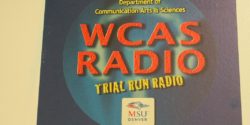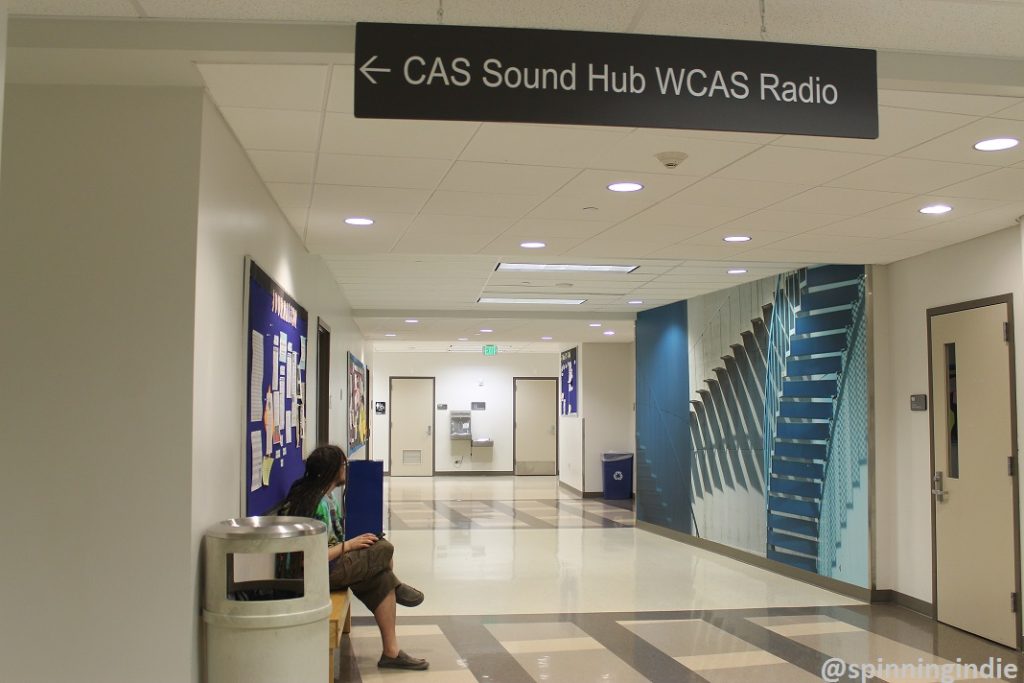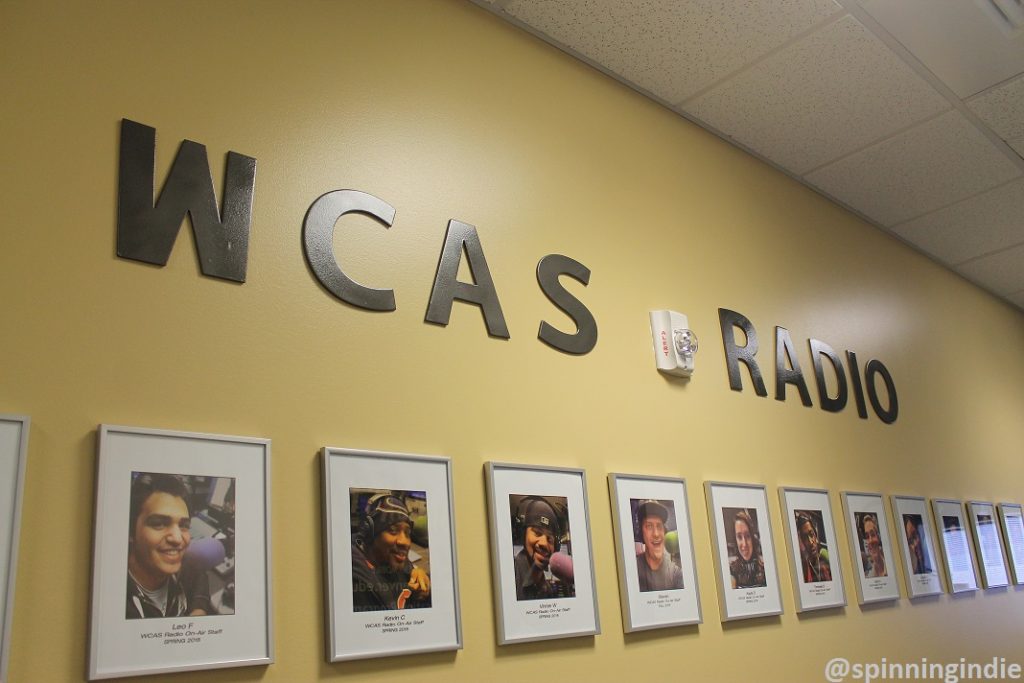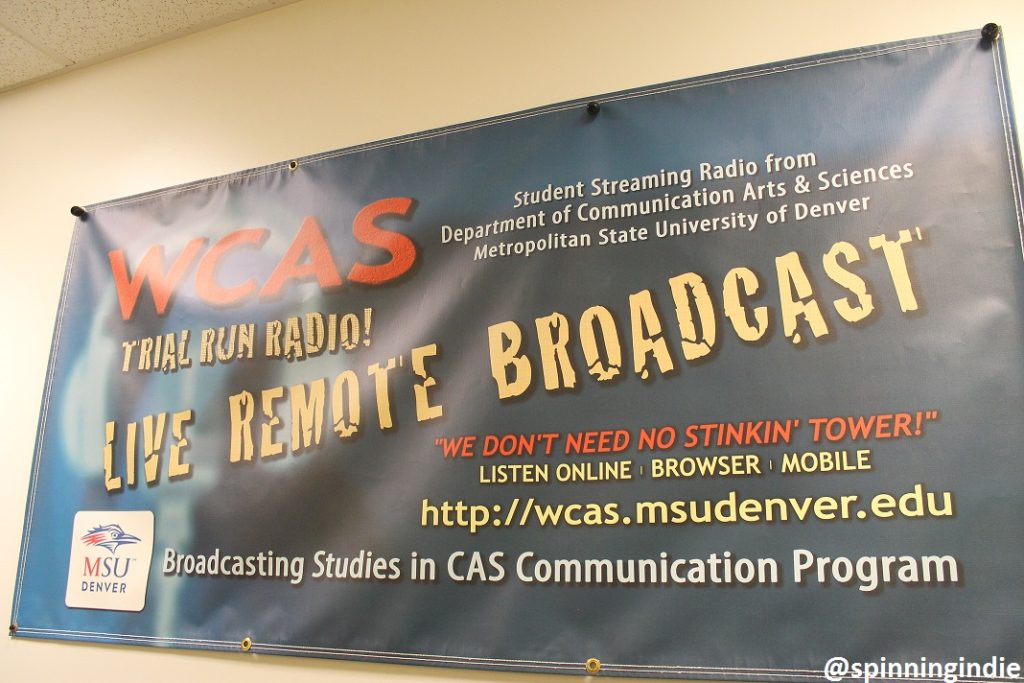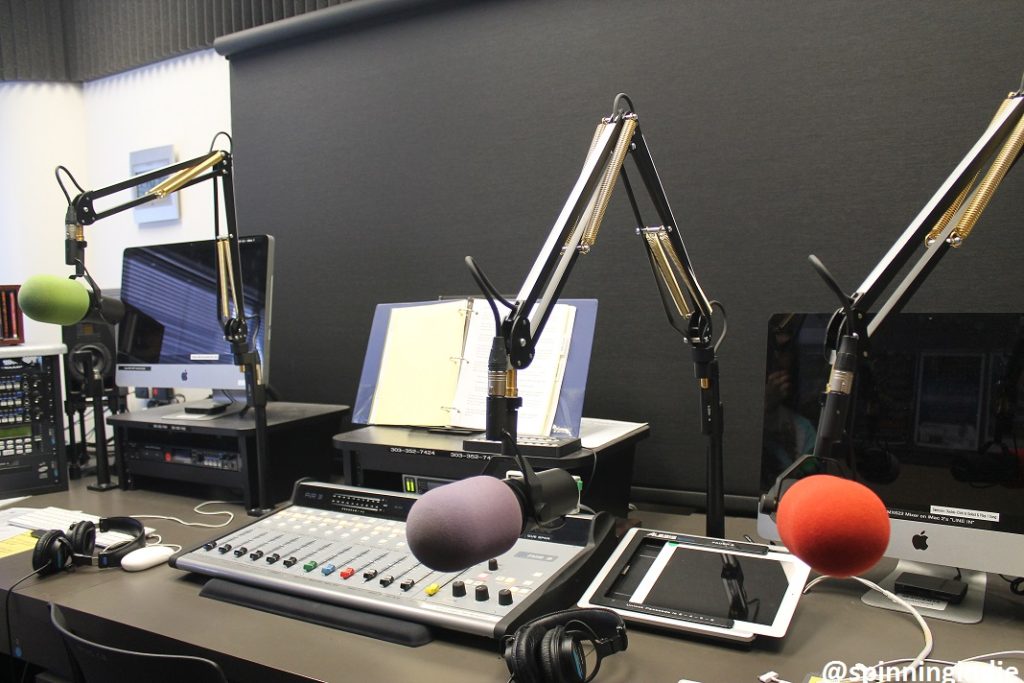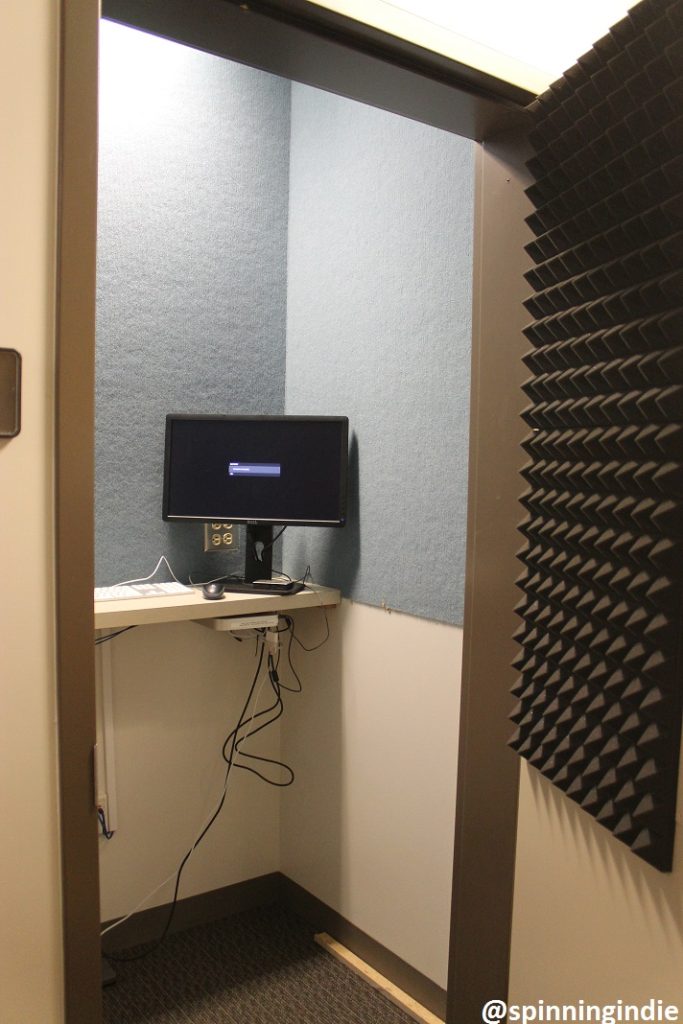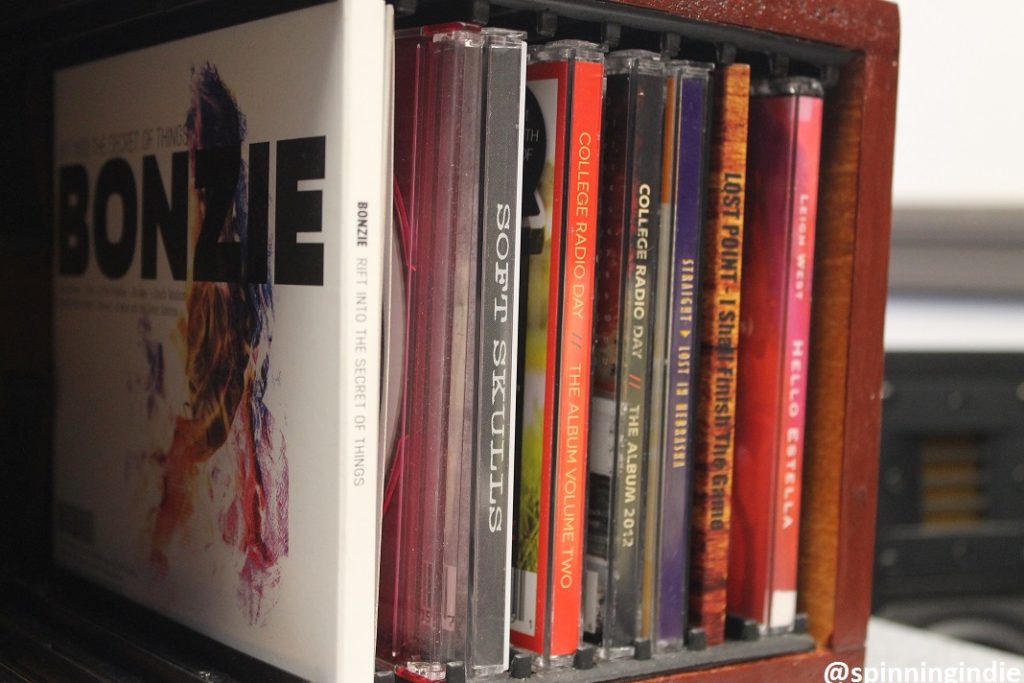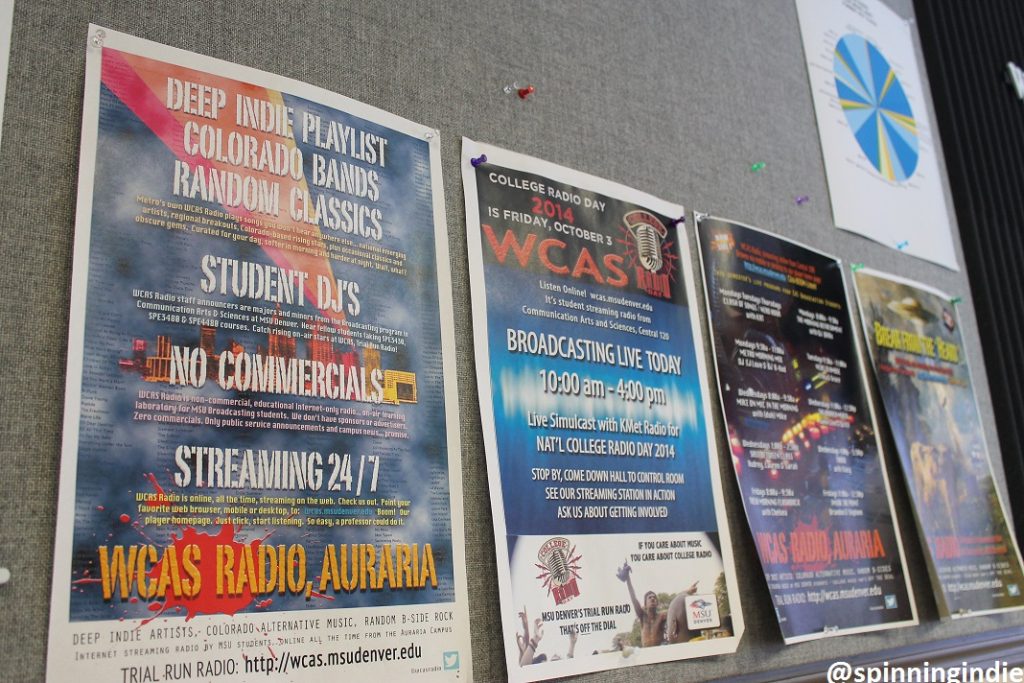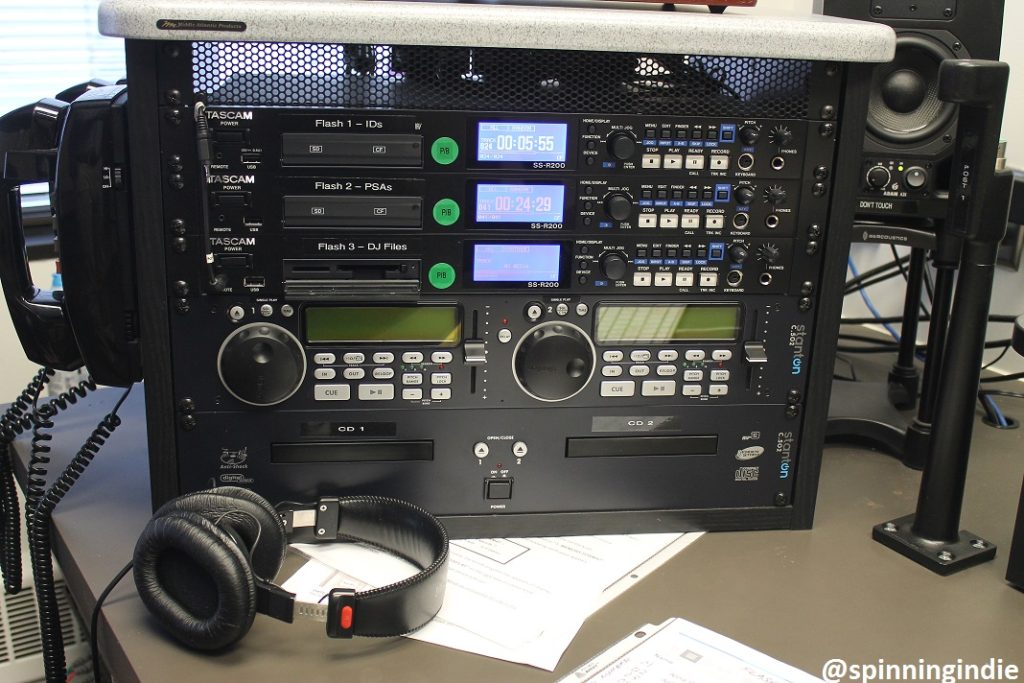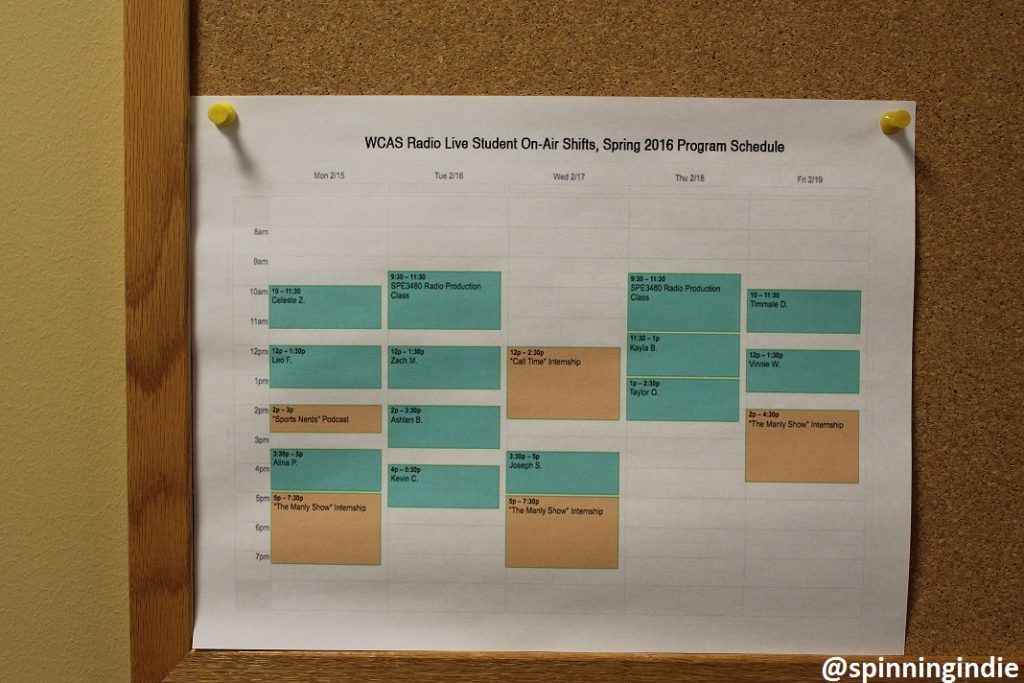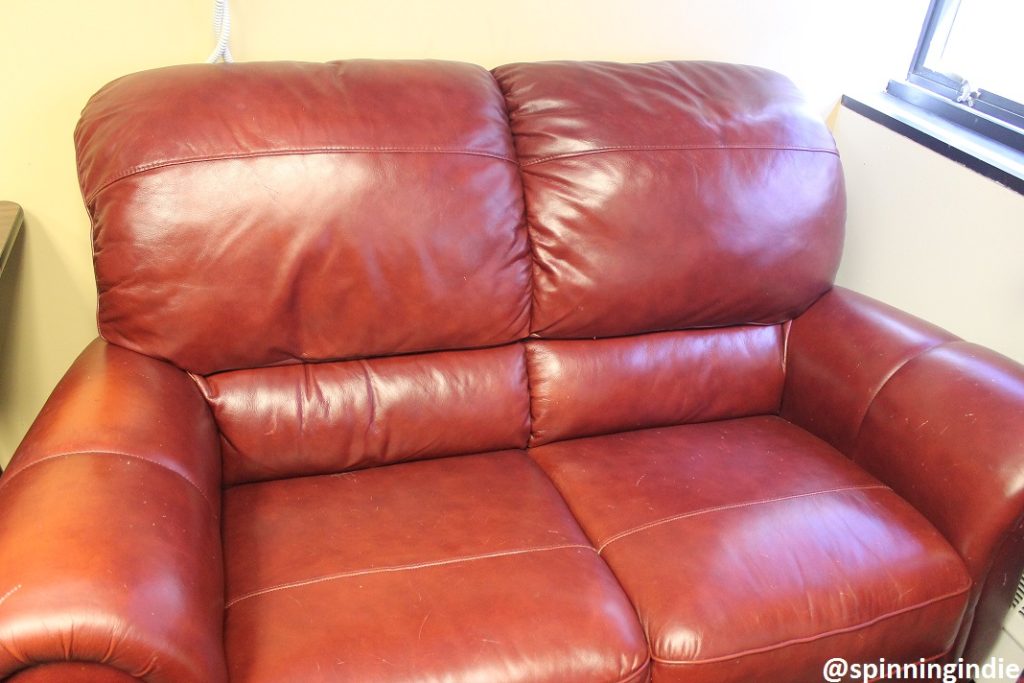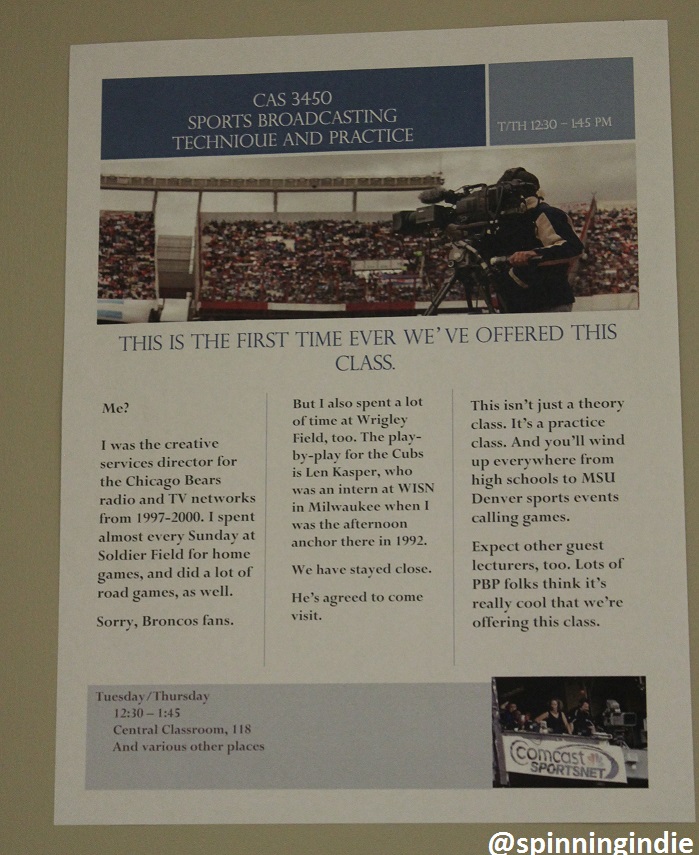Back in July, I had the good fortune of seeing two radio stations at the Metropolitan State University of Denver. I’ve previously written about my trip to visit the student-run Met Radio and now I turn my attention to WCAS Radio. Run by the Communication Arts and Sciences Department, online-only WCAS (the CAS stands for “Communication Arts and Sciences”) serves as a training ground for students interested in careers in broadcasting. Although the two stations are across campus from one another, there’s some crossover with the student-run station and my tour guide Vinnie White has been involved with both stations.
Although WCAS was quiet on the day of our visit, department staffers let us in so that White could give me a quick tour. A long hallway adorned with photos of WCAS hosts leads to the on-air studio and to the right of the hallway there’s a separate nook housing nine small recording booths. As we walked down the hall to the studio, I spotted White’s picture on the wall. As host of a show the prior semester, he made it onto the station’s wall of fame.
As we entered the on-air studio, we heard surf music emanating from the monitor speakers. Even though WCAS isn’t staffed in the summer, automation was still humming along. Dubbed “Trial Run Radio,” White told me that compared with Met Radio, WCAS has an emphasis on the “mechanics” of radio, as opposed to functioning as an extra-curricular activity.
Since I had such a quick tour, I reached out to Faculty Program Director Jim Furrer to get more back story about the station. He’s played a huge role in the development of WCAS, telling me over email, “I’m also the chief engineer, station manager and continuity director, all part of my role as one of the broadcasting faculty in the Media Studies program in the Department of Communication Arts and Sciences at MSU Denver. I actually designed and installed the entire WCAS Radio facility, which also makes me the on-going maintenance engineer when necessary.”
The station is approaching its fourth anniversary as a streaming radio station next month, as WCAS aired its first live broadcast from its newly completed studio on November 8, 2012. It was running automated programming for a few months prior to that date. Over the summer the station also runs on automation, as there are no broadcasting classes during those months. Furrer explained how WCAS Radio serves a different purpose from that of Met Radio, telling me,
WCAS Radio is strictly a ‘learning laboratory’ for our broadcasting majors in Media Studies. Besides the large control room and adjoining classroom space, the studio area also includes nine announcing booths where students can track and record various voice assignments for later editing. This WCAS studio complex supports the lab portion of our curriculum for such courses as Radio Production, Advanced Radio Production, Sports Broadcasting and Performance for Broadcast. As part of their studies each student is required to perform a 90 minute live broadcast every week throughout the semester. In this role as primarily a learning lab experience supporting class curriculum, unlike Met Radio we have no student management staff and our weekly program schedule varies wildly from semester to semester. But as an example, last semester WCAS Radio featured over 38 hours of live radio programming each week.”
Although he said it “varies with course enrollment each semester,” Furrer said that “on average, between 15 and 28 students each semester” participate at WCAS. Students must be enrolled in broadcasting courses in order to be a DJ or host. “We’re a training facility first and foremost (as such, a number of our students have elected to continue their college radio experience by moving over to Met Radio after completing their coursework within our department),” explained Furrer, noting that there is crossover between the two campus stations. The two stations even worked together on a College Radio Day simulcast in 2014.
As far as programming, WCAS airs music and talk shows. When running in full automation, the station plays an “‘alternative’ format and ‘deep indie’ with emphasis on local and regional artists,” according to Furrer. The airsound is even more diverse when student-produced shows run during the school year. Furrer explained that, “…when students perform their live lab shifts, they have complete formatting freedom with no restrictions on show content or music selection. Note that some students choose more ‘talk radio’ type of productions, others have tried live comedy or even dramatic works.”
A promotion on the WCAS website hints at that, with a blurb touting “Radio Drama’s Back: Suspense. Thursday and Friday 11:30pm to midnight.” As far as sports, the broadcast program has some exciting plans for a new sports channel. Furrer revealed that, “There are no plans at the present to take WCAS Radio over-the-air using a transmitter, although we are constructing an AM transmitter for a second ‘sports radio’ operation here on campus at 1470 on the AM dial, this facility will operate under FCC AM Broadcast Regulations, Part 15.221 (B).”
According to Furrer, it is hoped that the new sports station will be on the air “by start of the college basketball season” and its main goal will be to cover campus athletics as well as to air campus sports talk shows.
Furrer’s mention of Part 15 unlicensed broadcasting piqued my interest, as I’m always intrigued by college radio stations that are doing small scale campus broadcasts. When I asked him why they were building a part 15 station, he said, “Simply because we can, and because streaming radio stations are great, but there’s just something magic about OTA. It’s REAL broadcasting.” He went into further detail, explaining how they have a unique opportunity to do an unlicensed low power AM station that covers nearly three square miles surrounding their campus. According to Furrer,
In 1990, the FCC amended the unlicensed low-power AM regulations to allow the use of an antenna to provide AM radio coverage on the campus of an educational institution. The federal rules allow the use of an AM vertical antenna on many educational campuses. Legally, an AM radio operation is an ‘intentional radiator’ and not a technically a ‘radio station.’ Power and length transmission are regulated. Part 15 stations cannot interfere with licensed operations. Part 15 stations are not assigned call letters. The FCC keeps no records related to Part 15 operators. Signal can reach up to two miles. Also, commercials are legal. Such operations are regulated under Part 15.221 B to a field of (24,000/Frequency) microvolts per meter, at a distance of 30 meters beyond the campus border. Finally, spectrum analysis for us showed a great ‘hole’ available at 1470 AM in downtown Denver.
In our case, the size of our physical campus was a positive factor because we actually have three separate institutions sharing the campus facilities here, which makes it physically quite large and there’s a state-controlled ‘landlord’ called the Auraria Higher Education Center that manages all grounds, utilities, buildings, space allocation, right-of-way, roads, sidewalks, etc. (the three schools are MSU Denver, University of Colorado Denver, and Community College of Denver, note that all three institutions also have satellite campus operations around the Denver area). Because of this, our ‘campus’ definition covers a very large patch of hardcore downtown Denver, Colorado. Because of student housing, campus out- buildings and galleries located several blocks outside our obvious perimeter, we can ‘stretch’ the definition of physical campus to cover nearly three square miles.”
It’s very exciting to hear about a college radio station launching a new AM broadcast and it makes sense to have that station emphasize sports and talk since much of the AM dial seems to be devoted to talk in 2016. The department has already been gearing up for that, as evidenced by a flyer that I saw at WCAS announcing a new course in “Sports Broadcasting Technique and Practice.”
Thanks so much to Vinnie White for the tour of WCAS and to Jim Furrer for taking the time to share more details about the history of the station as well as the scoop on its plans for the future. This is my 114th radio station field trip report, which means that I’m nearly caught up, with just one Southern California tour remaining on my to-do list. See my most recent field trips on Radio Survivor and peruse a full list of my station tour reports on Spinning Indie.

